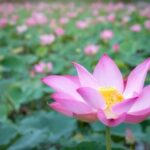Japanese gardening ideas encompass the serene and tranquil principles of traditional Japanese gardens. From carefully curated plant selection to intricate pruning techniques, Japanese gardens offer a peaceful retreat that can be recreated in any outdoor space.
In this article, we will explore the history, philosophy, essential elements, techniques, and maintenance tips for creating a beautiful Japanese-inspired garden. Whether you have a large backyard or a small balcony, these Japanese gardening ideas will help you bring a touch of Zen to your outdoor space.
The art of Japanese gardening dates back centuries and is deeply rooted in the country’s history and culture. By understanding the principles and philosophy behind these gardens, you can create your own serene oasis. We will delve into the historical significance of Japanese gardening and how it has evolved over time to encompass different aspects of nature, spirituality, and architecture.
In addition to exploring the history and philosophy of Japanese gardening, we will also discuss essential elements such as rocks, gravel, water features, and carefully placed plants that contribute to the harmonious balance found in traditional Japanese gardens. Furthermore, we will provide tips on how to incorporate these elements into your own garden to create a tranquil atmosphere that promotes relaxation and mindfulness.
History of Japanese Gardening
The history of Japanese gardening dates back to around 600 AD, when the influence of Chinese and Korean gardening traditions began to shape the concept of creating naturalistic landscapes. The introduction of Buddhism in Japan also played a significant role in the development of Japanese gardening, as it emphasized the importance of connecting with nature and creating serene environments for meditation.
During the Heian period (794-1185), formal gardens with ponds, islands, and bridges became popular among the nobility and aristocrats. These gardens were designed to mimic natural landscapes and were often used as settings for poetry readings and tea ceremonies. The principles of simplicity, asymmetry, and naturalness began to emerge during this time and have since become fundamental elements in Japanese garden design.
In the Muromachi period (1333-1568), Zen Buddhism had a profound influence on Japanese gardening philosophy. Zen temples featured dry rock gardens, known as karesansui, which were intended to facilitate meditation and contemplation. This period also marked the refinement of techniques such as pruning, moss cultivation, and bonsai – all essential aspects of Japanese gardening that continue to be practiced today.
Japanese gardening ideas from different historical periods can be incorporated into modern garden designs. By understanding the history of Japanese gardening, one can gain insight into the evolution of its principles and techniques while honoring its cultural significance.
Whether it’s creating a contemporary Zen garden or integrating traditional elements into a small urban space, drawing inspiration from the rich history of Japanese gardening can result in a harmonious outdoor sanctuary that reflects the timeless beauty and tranquility of this ancient art form.
Principles and Philosophy of Japanese Gardening
Japanese gardening is deeply rooted in the principles and philosophy of nature. One of the core concepts in Japanese gardening is the idea of capturing and reflecting the natural landscape within a confined space. This is often achieved through the use of carefully placed rocks, gravel, water features, and meticulously trimmed plants to mimic the tranquility of nature. The ultimate goal of Japanese gardening is to create a harmonious and peaceful environment that promotes meditation and contemplation.
Another fundamental principle of Japanese gardening is the concept of “wabi-sabi,” which emphasizes the beauty of impermanence, simplicity, and imperfection. This philosophy is reflected in the deliberate use of weathered materials, asymmetrical arrangements, and unrefined textures to evoke a sense of rustic elegance in the garden.
In addition, Japanese gardens are designed to be experienced over time as they change with each season. Each season brings unique beauty that is celebrated in traditional Japanese gardens through carefully selected plantings and intimate spaces for appreciation. These principles not only guide the physical design of a Japanese garden but also influence its emotional and spiritual impact on those who visit or tend to it.
| Japanese Gardening Ideas | Principles & Philosophy |
|---|---|
| Capturing natural landscape within a confined space | Wabi-sabi philosophy: impermanence, simplicity, imperfection |
| Promoting meditation and contemplation | Celebrating seasonal beauty through plantings |
Essential Elements of Japanese Gardens
Japanese gardens are known for their unique and distinct elements that create a serene and tranquil atmosphere. One essential element of Japanese gardening is the use of rocks and stones, which are carefully placed to symbolize mountains, islands, or even animals.
These rocks are often accompanied by gravel or sand, creating patterns that represent water or waves, adding a sense of movement to the garden. The use of rocks and stones in Japanese gardens reflects the natural landscape and brings a sense of harmony and balance to the overall design.
Another key element of Japanese gardens is the use of water features, such as ponds, streams, or waterfalls. Water is considered a vital component in Japanese gardening as it represents purity, tranquility, and life. The sound of flowing water adds an auditory dimension to the garden, contributing to its calming atmosphere. Water features also serve as habitats for fish and other aquatic creatures, enhancing the garden’s natural environment.
One more essential element in Japanese gardening is the use of bridges and pathways. Bridges are often used to traverse over ponds or streams, serving both a functional purpose and adding aesthetic value to the garden.
Pathways made from stepping stones or gravel encourage visitors to slow down and appreciate each view within the garden. These pathways are designed with careful consideration of each step’s placement and direction, leading visitors on a journey through different parts of the garden while promoting mindfulness and contemplation.
Incorporating these essential elements into your own Japanese garden can help you create a space that embodies tranquility and harmony while providing you with a place for relaxation and contemplation amidst nature’s beauty. Whether you have ample space for a large-scale Japanese garden or only a small area for a miniaturized version, these essential elements can be adapted to fit any size outdoor space while preserving the authentic essence of Japanese gardening ideas.
Japanese Gardening Techniques
Japanese gardening is known for its unique techniques, including the art of pruning and the cultivation of bonsai trees. These practices are essential in creating the serene and harmonious atmosphere that Japanese gardens are famous for. Let’s explore how these techniques are used to enhance the beauty of a traditional Japanese garden.
Pruning in Japanese gardening is not just about maintaining the shape and size of plants; it is also a way to create an artistic expression within the garden. The goal of pruning is to mimic the natural shapes found in nature, such as clouds, waves, or mountains. This technique, known as “niwaki,” involves carefully sculpting trees and shrubs to create organic forms that complement the overall design of the garden.
Bonsai, on the other hand, is the art of cultivating miniature trees in containers. This ancient practice requires patience and skill to cultivate and maintain these small masterpieces. Bonsai trees are often used as focal points in Japanese gardens, representing the beauty and tranquility of nature on a smaller scale. When incorporating bonsai into your garden, it’s important to consider factors such as size, shape, and placement to ensure harmony with the overall landscape.
- Pruning in Japanese gardening involves mimicking natural shapes like clouds or mountains
- Bonsai is the art of cultivating miniature trees in containers
- Bonsai trees often serve as focal points in Japanese gardens
With these techniques, you can bring authenticity to your own garden by embracing traditional Japanese gardening ideas and philosophies.
Plant Selection for Japanese Gardens
When it comes to creating a traditional Japanese garden, the choice of plants is crucial in capturing the essence of nature and harmony. One important aspect of Japanese gardening ideas is the use of native plants that are well-suited to the local climate and soil conditions.
Some common plant selections for Japanese gardens include cherry blossoms, Japanese maple trees, bamboo, azaleas, and moss. These plants not only add visual appeal but also hold significant cultural and symbolic meanings in Japanese tradition.
In addition to native plants, evergreen shrubs such as camellias and boxwoods are often used in Japanese gardens to provide structure and year-round interest. The careful arrangement of these plants in different layers and groupings creates a sense of depth and balance that is characteristic of traditional Japanese landscaping. Furthermore, incorporating a variety of textures such as fine foliage ferns or coarse gravel further contributes to the overall aesthetic appeal.
Another essential aspect of plant selection for Japanese gardens is the concept of “wabi-sabi,” which embraces imperfection and transience. This philosophy emphasizes the beauty of aging and imperfection in nature, which can be reflected through the use of weathered stones, moss-covered surfaces, or gnarled tree trunks within the garden space.
Overall, when choosing plants for a Japanese garden, it is important to select those that not only thrive in the local environment but also contribute to creating a tranquil and harmonious atmosphere that embodies the principles of nature found in traditional Japanese gardening ideas.
| Japanese Garden Plants | Meaning/Symbolism |
|---|---|
| Cherry Blossoms | Beauty & Transience |
| Bamboo | Strength & Flexibility |
| Moss | Simplicity & Tranquility |
Creating a Zen Atmosphere in Your Garden
Creating a peaceful and calming atmosphere is a key aspect of Japanese gardening. To achieve a Zen atmosphere in your garden, it is important to focus on simplicity, balance, and natural elements. One way to create this serene environment is by incorporating carefully placed rocks and gravel to represent water or create pathways. This traditional technique, known as Karesansui or dry landscape gardening, allows for contemplation and reflection within the garden space.
In addition to rocks and gravel, another essential element in creating a Zen atmosphere is the use of bamboo. Bamboo can be used to create privacy screens, ornamental features, or even wind chimes that add gentle sounds to the garden. The sound of bamboo swaying in the breeze can enhance the meditative quality of the space.
Furthermore, incorporating natural materials such as wood and stone into the garden design can help to establish a sense of harmony with nature. Whether it’s using wooden fences or stone lanterns, these elements add a touch of authenticity to your Japanese-inspired garden. By carefully selecting and arranging these elements, you can transform any outdoor space into a tranquil oasis that promotes relaxation and mindfulness.
By applying these Japanese gardening ideas and principles, you can cultivate a Zen atmosphere in your garden that provides not only visual delight but also an opportunity for inner peace and spiritual rejuvenation. Whether you have a small urban patio or a spacious backyard, integrating these elements will allow you to create an inviting retreat that reflects the timeless beauty and tranquility of traditional Japanese gardens.
Maintenance and Care Tips for Japanese Gardens
Japanese gardens are known for their serene and tranquil beauty, but achieving and maintaining that aesthetic requires careful attention to maintenance and care. Whether you have a small or large Japanese garden, keeping it healthy and beautiful is essential for preserving its peaceful ambiance. Here are some tips to help you maintain your Japanese garden:
Pruning and Trimming
One of the key elements in Japanese gardening is the art of shaping trees and plants to create a harmonious and balanced landscape. Regular pruning and trimming are necessary to keep your garden looking neat and well-kept. In addition to promoting plant health, proper pruning also helps maintain the clean lines and orderly appearance that are characteristic of Japanese gardens.
Weeding
Keeping your Japanese garden free of weeds is crucial for maintaining its minimalist design. Weeds can quickly detract from the carefully curated aesthetic of the space, so regular weeding is necessary. Hand-pulling weeds is often recommended in Japanese gardening to avoid disrupting the surrounding plants, but using organic mulch can also help suppress weed growth.
Careful Watering
In Japanese gardening, water features like ponds or streams play an important role in creating a sense of tranquility. Proper watering techniques are crucial to ensure the health of your plants as well as the overall ambiance of your garden. Overwatering or underwatering can disrupt the balance of your garden, so it’s important to water mindfully according to each plant’s specific needs.
With these maintenance and care tips, you can continue to uphold the principles of harmony and simplicity that define Japanese gardening while enjoying a beautiful and serene outdoor space. Incorporating these practices into your gardening routine will help ensure that your Japanese garden remains a place of peaceful retreat for years to come.
Incorporating Water Features in Japanese Gardens
Water features are a key element in traditional Japanese gardening, as they symbolize the passage of time and create a sense of tranquility and harmony. Here are some Japanese gardening ideas for incorporating water features into your garden:
- Koi Ponds: These are a staple in Japanese gardens, typically featuring colorful koi fish and surrounded by lush greenery and rocks. The gentle sound of water flowing and the graceful movement of the fish create a calming atmosphere.
- Lanterns and Basins: Stone lanterns and basins are often placed near water features to add visual interest and create a focal point within the garden. They can be used to illuminate pathways or highlight specific areas of the garden.
- Tsukubai: A tsukubai is a small stone basin with running water that is used for purifying rituals in Japanese tea ceremonies. Incorporating a tsukubai into your garden adds a spiritual element and can serve as a meditative focal point.
When incorporating water features into your Japanese garden, it’s important to consider the overall balance and harmony of the space. The placement of these elements should flow seamlessly with the rest of the garden, creating a cohesive and serene environment.
By carefully selecting and positioning water features within your Japanese garden, you can enhance its aesthetic appeal while promoting a sense of peace and relaxation. Whether you choose to include koi ponds, lanterns, basins, or tsukubai, each water feature contributes to the timeless beauty and tranquility that is characteristic of traditional Japanese gardening.
Japanese Gardening Ideas for Small Spaces
In conclusion, Japanese gardening is a timeless and elegant art form that has captivated people around the world. The history, principles, and essential elements of Japanese gardening provide a rich foundation for creating beautiful outdoor spaces. Whether you have a large yard or a small urban balcony, there are endless possibilities for incorporating Japanese gardening ideas into your own outdoor oasis.
One of the key aspects of Japanese gardening is creating a sense of tranquility and harmony within the space. This can be achieved through carefully chosen plant selections, strategic use of water features, and creating a Zen atmosphere in your garden. Even in small spaces, it is possible to evoke the peaceful serenity often found in traditional Japanese gardens.
For those with limited outdoor space, there are still many ways to integrate Japanese gardening ideas into your environment. By incorporating elements such as bonsai trees, rock gardens, or carefully curated plant selection, even the tiniest outdoor nook can become an oasis inspired by the beauty and tranquility of traditional Japanese gardens. With creativity and attention to detail, it is possible to bring the essence of Japanese gardening into any outdoor space.
Frequently Asked Questions
What Are the 3 Essential Elements of a Japanese Garden?
The three essential elements of a Japanese garden are nature, symbolism, and tranquility. Nature is represented through the use of plants, stones, and water features. Symbolism is incorporated through carefully chosen elements like lanterns or bridges. Tranquility is achieved through arranging these elements in a harmonious way, creating a peaceful atmosphere.
What Is the Japanese Style of Gardening?
The Japanese style of gardening, known as “nihon teien,” focuses on creating a serene and harmonious space that reflects the natural landscape. It often includes carefully selected plants, rocks, water features, and structures like pagodas or tea houses. The goal is to create a space that evokes a sense of calmness and tranquility.
How Can I Make My Garden Look Japanese?
To make your garden look Japanese, you can start by incorporating key elements such as bamboo fencing or screens, stone lanterns, a teahouse or pavilion, carefully pruned trees and shrubs (such as bonsai), and a rock or gravel area to represent water. Consider adding a koi pond or simple bridge to enhance the overall Japanese aesthetic of your garden.
Incorporating these elements while maintaining simplicity and balance will help achieve the desired Japanese garden look.

Welcome to my gardening blog! I am passionate about plants and enjoy sharing my knowledge and experiences with others. In this blog, I will write about everything related to gardening, from tips on how to get started to updates on my own garden projects.





